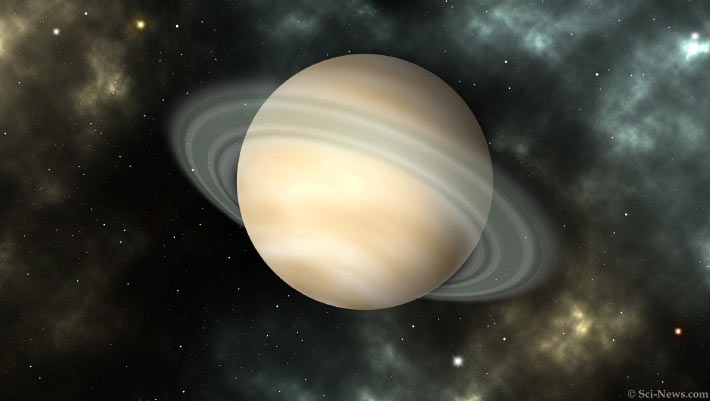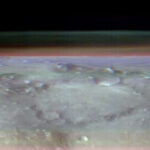The NASA/ESA/CSA James Webb Space Telescope has begun its scientific mission, which includes the atmospheric characterization of transiting exoplanets. Some of the first exoplanets to be observed by Webb have temperatures below 1,000 K (727 degrees Celsius or 1,340 degrees Fahrenheit), which is a regime where atmospheric hazes are expected to form. The optical properties of these hazes, which control how they interact with light, are critical for interpreting exoplanet observations, but relevant experimental data are not available. Now, Johns Hopkins University astronomer Chao He and colleagues have measured the density and optical properties of organic haze analogues generated in water-rich exoplanet atmosphere experiments. Their results offer new tools to study the atmospheric chemistry of exoplanets and will help scientists model how water exoplanets form and evolve.
“The big picture is whether there is life outside the Solar System, but trying to answer that kind of question requires really detailed modeling of all different types, specifically in planets with lots of water,” said Johns Hopkins University astronomer Sarah Hörst.
“This has been a huge challenge because we just don’t have the lab work to do that, so we are trying to use these new lab techniques to get more out of the data that we’re taking in with all these big fancy telescopes.”
“Whether a planet’s atmosphere contains hazes or other particles has a marked influence on global temperatures, incoming levels of starlight, and other factors that can hinder or foster biological activity.”
Dr. He, Dr. Hörst and co-authors ran the experiments in a custom-designed chamber within their lab.
“We are the first to determine how much haze can form in water planets beyond the Solar System,” Dr. Hörst said.
Haze consists of solid particles suspended in gas, and it alters the way light interacts with that gas.
Different levels and kinds of haze can affect how the particles spread out through an atmosphere, changing what scientists can detect about distant planets with telescopes.
“Water is the first thing we look for when we’re trying to see if a planet is habitable, and there are already exciting observations of water in exoplanet atmospheres,” Dr. He
“But our experiments and modeling suggest these planets most likely also contain haze.”
“This haze really complicates our observations, as it clouds our view of an exoplanet’s atmospheric chemistry and molecular features.”
Astronomers study exoplanets with telescopes that look at how light passes through their atmosphere, spotting how atmospheric gases absorb different hues or wavelengths of that light.
Distorted observations can lead to miscalculations of the amounts of important substances in the air, such as water and methane, and the type and levels of particles in the atmosphere.
“Such misinterpretations can impair scientists’ conclusions about global temperatures, the thickness of an atmosphere, and other planetary conditions,” Dr. Hörst said.
The authors concocted two gas mixtures containing water vapor and other compounds hypothesized to be common in exoplanets.
They beamed those concoctions with ultraviolet light to simulate how light from a star would start the chemical reactions that produce haze particles.
They then measured how much light the particles absorbed and reflected to understand how they would interact with light in the atmosphere.
The new data matched the chemical signatures of a well-studied exoplanet called Gliese 1214b more accurately than previous research, demonstrating that hazes with different optical properties can lead to misinterpretations of a planet’s atmosphere.
“Alien atmospheres can be very different from those in our Solar System,” Dr. Hörst said.
“There are more than 5,000 confirmed exoplanets with varying atmospheric chemistries.”
The team’s paper was published in the journal Nature Astronomy.
_____
C. He et al. Optical properties of organic haze analogues in water-rich exoplanet atmospheres observable with JWST. Nat Astron, published online November 27, 2023; doi: 10.1038/s41550-023-02140-4




